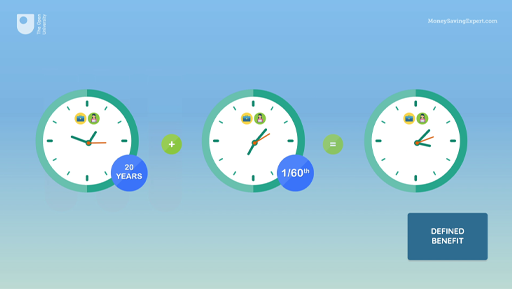3 Occupational pension schemes
As the term suggests, occupational pension schemes are offered by employers to their staff.
There are two types of occupational schemes:
- Defined contribution schemes (also called money purchase schemes). These schemes are the most common type these days. Here, what you get from your pension scheme will depend on the size of the pension fund (or ‘pot’) you accumulate.
- Defined benefit schemes. Few of these are now open to new joiners as they are expensive for firms to run. With defined benefit schemes the size of your annual pension is usually linked to your salary – for example, the salary in your last year prior to retiring, or your average salary during your time as a member of the scheme. Those lucky enough to already have one should recognise that these are the gold-plated pensions as they tend to pay out the most.
If you are starting a pension now it is highly likely that defined contribution scheme will be the one you’ll have to go for. In fact, membership of such schemes has increased significantly in recent years, as a result of the closure to new membership of many defined benefit schemes and the policy of ‘automatic enrolment’ onto pension schemes (you will look at automatic enrolment later in this session). In 2018 there were nine times as many employees who were active members of private sector defined contribution schemes as there were in defined benefit schemes (ONS, 2019b).
Watch Video 2 and learn about the differences between the two schemes, then try the activity below.

Transcript: Video 2 Understanding pension schemes
Activity 3 Who bears the pension risk?
Having watched Video 2, who do you think bears the risk when it comes to the pension provided under:
- a defined benefit scheme?
- a defined contribution scheme?
Discussion
With a defined benefit scheme the employer is making a promise about the amount of the pension an employee will receive. This is set out through an equation linked to the employee’s earnings and the number of years of membership of the scheme. So, the employer bears the risk.
With defined contribution schemes the risk is shifted to the employee. The employer makes no defined pension promise. The pension obtainable will be linked to the size of the employee’s pension fund on retirement – something that cannot be forecast with certainty.
Defined contribution schemes are also less costly for employers as most pay far less into this type of scheme than they would into a defined benefit scheme. This means a reduction in the money going into an individual’s pension pot, which reduces the eventual pension.
